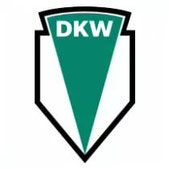
DKW Motorcycle Manuals PDF


History of DKW Motorcycles
Some DKW Motorcycle Manuals are above the page.
In 1907, the name of the German company DKW stood for "Dampf-Kraft Wagen" which translated means "steam car".
Since 1917, after the company began producing miniature 18-cc two-stroke toy motors, power 0.5 hp, the name was changed to "Des Knaben Wunsch", which translated means "dream boy".
And in 1919, after its launch 118-cc engine capacity of 1 hp, which was very successful, there is a new version of the title: "Das Kleine Wunder", which means "little miracle". This engine was really "small miracle" because it is, for all its miniature he could disperse the bike up to 40 km / h. Due to good demand, motokompaniey three years was released about 20 thousand of these motors.
During the WW2 DKW motorcycles were very much in demand. For example DKW RT125 model became the basis for motorcycles worldwide, it copied almost all major major motorcycle manufacturers, including Japanese, American and Soviet.
A motorcycle DKW NZ350 in the modification "NZ350 / 1" in 1944, became the prototype of the Soviet motorcycle "IL-350".
On a motorcycle DKW RT125-stroke single-cylinder set 123 cc engine, an output of 18.5 hp This model had its own characteristics which allowed it to achieve the incredible popularity: tubular-welded frame; foot gear selection; Mount the cylinder to the crankcase by means of anchor pins; simple design and because of this huge reliability and the ability to repair their own.
The model was equipped with a single-cylinder DKW NZ250 two-stroke 247 cc engine with a capacity of 9 hp and four-stage gearbox with foot and hand-switching mechanism.
Launch of DKW NZ350 began in 1939. Bike was fitted with a single-cylinder 346 cc two-stroke engine with a capacity of 11,5l.s. Number of new features of this bike, distinguishes it among the German average cubic capacity motorcycles.
Innovations were: motor chain transfer under the aluminum crankcase cover; four-stage gearbox combination, hand and foot, switching; powerful frame with welded front and reinforced welded front feathers.
In 1944, the motorcycle has undergone modernization - block engine started completely made of cast iron. This series is called the DKW NZ350 / 1.
